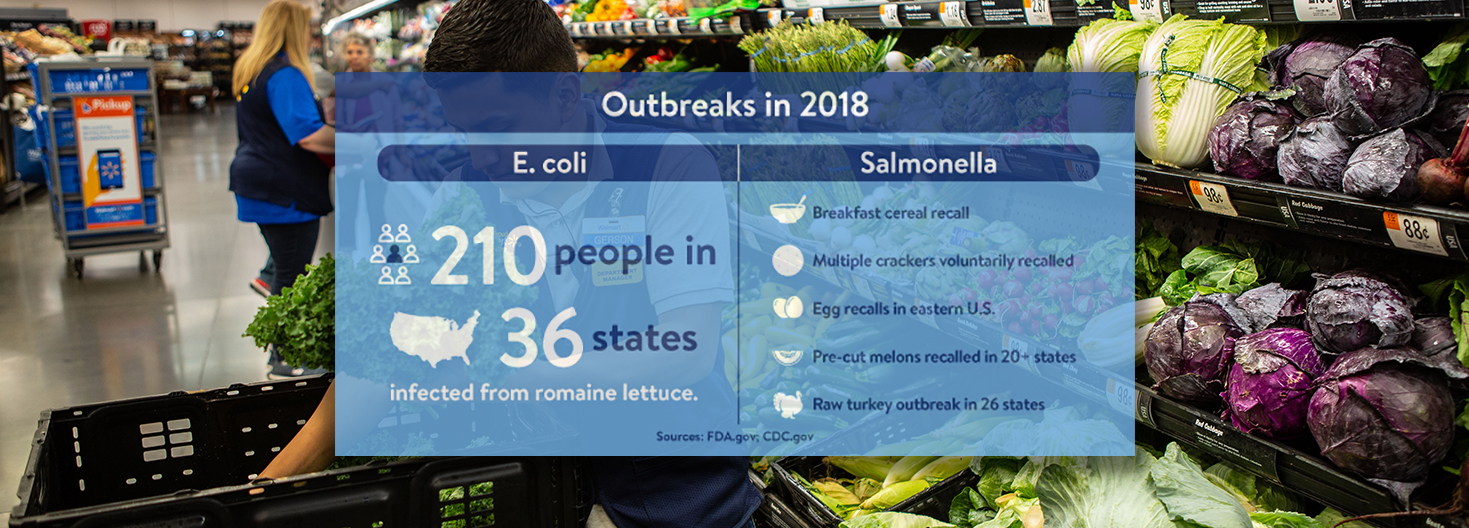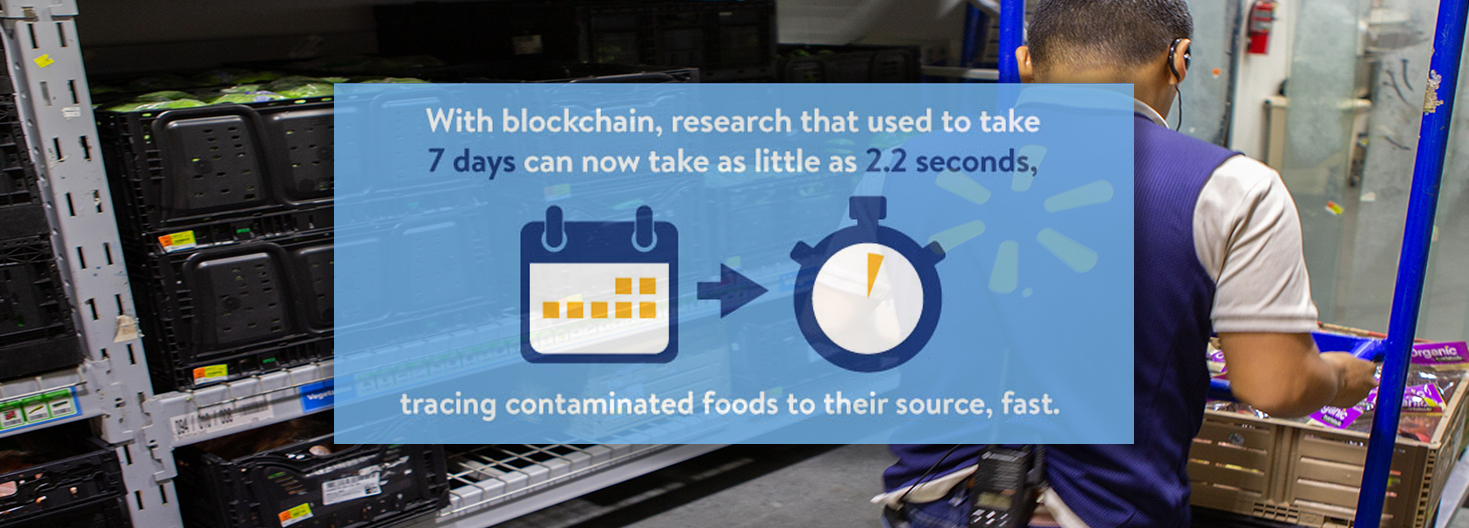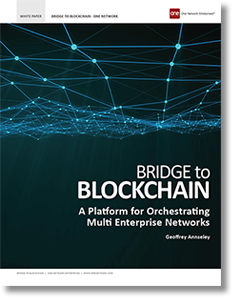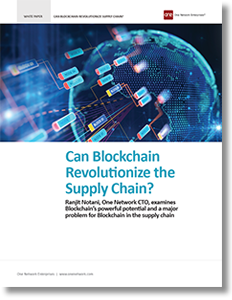Walmart Requires Blockchain Technology to be Deployed by Certain Produce Suppliers

U.S. retail giant Walmart and its division Sam’s Club will require suppliers of leafy greens to implement a farm-to-store tracking system based on blockchain technology.
Blockchain Technology
According to Walmart, The end-to-end traceability system is based on distributed ledger technology developed by computing giant IBM and will require suppliers to implement blockchain technology by September 2019.
How Do You Know Your Food Is Safe To Eat?
This isn’t a question many of us often ask ourselves. But lately, food safety has been in the public eye: 2018 has already seen a large outbreak of E. coli in romaine lettuce and Salmonella in a number of products from eggs to breakfast cereal, Walmart reported.
Walmart Asks Suppliers of Leafy Greens to Use Blockchain
Today, Walmart and Sam’s Club sent a letter to suppliers of fresh, leafy greens asking them to trace their products all the way back to the farm using blockchain technology.
Suppliers are expected to have all these systems in place by this time next year.
This change means that the information gathered by these suppliers will be open and accessible through technology that offers real-time, end-to-end traceability from farm to table. Blockchain allows for digitized sharing of data in a secure and trusted way.
Improving Farm-to-Table Transparency
What happens when the food you buy has been identified as having Salmonella or E. coli? You may not know where or how your Caesar salad was affected. You just know you don’t want your family to get sick when eating it.
This year, many customers and grocers were forced to throw away large amounts of romaine lettuce when an E. coli contamination in romaine lettuce spread through the food industry. Health officials at the Centers for Disease Control told Americans to avoid eating lettuce that was grown in Yuma, Arizona.
“But it was difficult for consumers to know how to determine where their lettuce was grown,” explained Frank Yiannas, VP of Food Safety at Walmart.
“None of the bags of salad had ‘Yuma, Arizona’ on them,” he said. “In the future, using the technology we’re requiring, a customer could potentially scan a bag of salad and know with certainty where it came from.”
It’s crucial to respond quickly and accurately to food safety issues like these. But with the traditional paper-based method of capturing information that exists at many farms, packing houses and warehouses, tracking down important data from multiple sources is extremely time-consuming.
With paper-based ledgers, Yiannas mentioned that it may take his team seven days to track down where a product came from. The team has to contact the supplier, get paper records and use those records to contact the company that imported or shipped the product to Walmart’s distribution center.
Seven days may seem like a long time, but take into consideration the path ahead of romaine lettuce takes to get to your salad bowl:
- At the farm, the lettuce is planted in a field; it grows, and a farmer harvests it.
- The next step sends the head of romaine to a processing facility where it gets washed, sliced and bagged.
- Next, it’s transported to a distribution center where it’s sorted and placed on trucks for delivery.
- Once the store receives the lettuce, associates unload it from a truck and immediately move it to a cooler where it is taken to the sales floor.
- From the sales floor, the lettuce is either put in a customer’s cart or selected by a personal shopper for grocery pickup or delivery.
- Now, the customer gets to eat the romaine lettuce in his or her favorite recipe.
Multiply this process by the 70,000 food items stocked in a typical grocery store, and you have an almost insurmountable challenge.
“The food system is absolutely too large for any single entity to [track],” Yiannas said.

Blockchain Changes Everything
“We’ve been working with IBM to digitize that, so the information is captured on the farm with a handheld system. It’s [also] captured at the packing house at the supplier,” Yiannas continued.
Now, Walmart plans to use the power of blockchain to speed up identifying, researching and reacting to food safety situations. Today’s news is the first step of bringing the benefits of open and transparent information to the food industry.
What is Blockchain, and Why is it Important?
Blockchain is a system of recordkeeping that is open to users. When a piece of permissioned information (or “block”) gets entered into the chain, other computers in the network are notified. This makes falsifying information very difficult because the change of information is open for all to see.
Think of these blocks of information as railroad ties. To place a tie on the ground, an agreement is needed by all the civil engineer, the foreman and so on. Once the tie is placed on the ground, the rail the train travels on is placed on top.
The tie is the block. The rail is the chain. That’s the basic concept of the blockchain.
Now, imagine trying to remove and alter one of those railroad ties. It’s not that simple. The tie can’t be altered without stopping trains, removing the rails, getting agreement from the civil engineer, and so on. Plus, everyone can see that you’re altering the railway, so you better make sure you get it right. There is a lot of accountability.
That’s what it is like to attempt to alter information in the blockchain. The information is out in the open creating greater transparency to changes. With increased accessibility comes more accuracy and trust.
This accuracy and trust are extremely important when both public health and livelihoods are on the line. Instead of taking a week to hunt down information about potential Salmonella in a product, blockchain tracking takes only a couple of seconds.
This gives food safety teams and customers alike the ability to react quickly.
In fact, the Centers for Disease Control believes that this change will help make more effective recalls.

Building Trust Through Transparency
Walmart’s new requirement is about making food safer throughout the supply chain.
“Customers trust us to help them put quality food on their tables for themselves and their families,” said Charles Redfield, executive vice president of food for Walmart U.S. “We have to go further than offering great food at an everyday low price. Our customers need to know they can trust us to help ensure that food is safe. These new requirements will help us do just that.”
Making information available in the interest of public safety is a step change for the industry. But it matters to everyone.
“When it comes to safety, this is not a competitive issue,” Yiannas said. “We all win or lose together.”
Related: Blockchain Technology and the Real-Time Global Supply Chain
Related Blockchain White Papers
Bridge to Blockchain: A Platform for Orchestrating Multi-Enterprise Networks New!
In this white paper, you will learn why blockchain platforms vary widely in terms capability, disclosure, confidentiality, anonymity, the cost to use, and speed, and why companies need to leverage more than one blockchain network to realize game-changing business models. Download Now!
Can Blockchain Revolutionize the Supply Chain?
In this white paper Ranjit Notani, One Network CTO examines Blockchain’s powerful potential as well as a major problem and whether and how Blockchains can revolutionize the Supply Chain. Download Now!
More Resources on Blockchain
Article Topics
One Network Enterprises News & Resources
Blue Yonder announces an agreement to acquire One Network Enterprises for $839 million Blue Yonder Acquires One Network Enterprises for $839M Companies Need to Develop New Innovative Approaches to Supply Chain Design How to Improve Cost of Goods Sold Horizontally Across the Supply Chain How the Global Pandemic Accelerated Supply Chain Visibility, Digitalization, and Automation AI and Data, the Future of Supply Chain Management AI and Supply Chain Problem Solving More One Network EnterprisesLatest in Supply Chain
Spotlight Startup: Cart.com Walmart and Swisslog Expand Partnership with New Texas Facility Nissan Channels Tesla With Its Latest Manufacturing Process Taking Stock of Today’s Robotics Market and What the Future Holds U.S. Manufacturing Gains Momentum After Another Strong Month Biden Gives Samsung $6.4 Billion For Texas Semiconductor Plants Apple Overtaken as World’s Largest Phone Seller More Supply Chain















